This blog post is a summary of a workshop delivered at Teach First’s Summer Institute with Nick Hutton.
Why are Behaviour routines effective?
Routines are behaviour tools to help teachers train pupils to behave or complete tasks in a certain way. Routines can serve many different purposes, they can:
Save time
There are many tasks that pupils take a significant amount of time to complete but those tasks are necessary, for example: passing out or collecting in exercise books, entering the classroom, exiting the classroom. If they are completed in an inefficient manner then huge amounts of time accumulated is wasted. Routines can save precious seconds that total to hours.
Improves Behaviour
With explicit narration of how you want pupils to behave or what you want pupils to be doing at different stages of the lesson can improve behaviour. Narrate to pupils what you want them to be doing and what you don’t want them to be doing.
Creating a positive and purposeful
Part of implementing a routine is narrating to pupils the purpose behind the routine. When they see that there is an important purpose behind a routine pupils can understand why they are praised for complying and accept demerits when they aren’t. An understanding of routines create that purposeful environment and positive environment.
Here are a few routines that can be implemented in the classroom. I have included the instructions I would use.
Handing out books.
I have my classroom organised in rows and the pupils’ books are placed on the windowsill. Pupils were taught how to pass their books down in the most time effective manner. Here are the instructions that were given to do this:
“The person sat at the windowsill, raise your hand please. You are the most important person in handing out the books! The faster you pass the books the faster your peers will have their books to start the task. You want to make sure that your row is the fastest one…
Your book will be on the top of the pile. You will take the pile and take your book. You will then pass the pile of books to the pupil next to you.
The next pupil, your book will be next in the pile. Take your book and pass it on.
So, the pupil at the window will have their book at the top of the pile. The pupil next to you will have their book next in the pile.
The pupil at the end of the row will have their book at the bottom of the pile.
Once you have your book, open it to your last page of working out and then SLANT to let me know that you are ready. We aren’t looking out of the window. We want to be ready!”
“When we pass our books back. The pupil at the end of the row. Your book will be at the bottom of the pile. When the next pupil gets the pile, you ALWAYS put your book on top. Not below. ALWAYS on top. Where do we put our book in the pile, Hamza?”
“We then put our pile of books on the windowsill. Once you have passed on your book you will slant.”
My instructions to the pupils are crystal clear. I have emphasised the role of the pupil who needs to take the pile of books. I have explained:
- where they can find their books
- what they have to do with the pile
- who they pass the pile on to
- what to do once they get their book
- what to do once their book is open to show me they are ready
I have also added a bit of flavour to my instructions in the sense that I have hyped up the kids to try and make sure they are the fastest row in passing out their books.
To get the pupils to get faster at handing out their books it would be a good idea to use a timer. I would then record the times for each day, and motivate the kids at the start of each lesson by saying
“Yesterday we passed the books in 42 seconds. Today we want to break that record. Let’s see if we can pass the books in 41 or 40 seconds? Ready…(scan the room to build suspense)…Go!”
Or you would set a countdown. This gives each pupil a sense of urgency that we don’t want to waste any time. It gets the pupils excited to beat a record.
The instructions for every lesson would be:
“When I say go, and not before. I want you to pass your green books and textbooks. Once you have your green book open it to the last page of working out and slant. That way I know that you are ready. You have 30 seconds. Let’s see whose row is the fastest. Ready…(watch class and pause to create suspense)…GO!
25-24-23…Lauren is ready…18…17…16…Hannah is slanting already…9…8…7…6….Emily’s row is ready…4…3…2…1…and slant! WOW, we broke our record – 29 seconds.”
A query that participants mentioned was “What if I haven’t got a windowsill? What if I haven’t got my tables in rows but in groups of 4 instead?” If I had my tables in rows and I had no windowsill or had my tables in groups of four then I would layout each rows’ pile of books just before the lesson.
This routine can be adjusted depending on the layout of your classroom. This routine simply saves time on a job that needs to be done. If I didn’t do this routine in a certain way then time would be wasted with books going up and down the row because a pupil could have another pupil’s book. The first pupil will waste time sifting through the pile of books to get their book. The time wasted accumulates to become hours. Pupils get frustrated filtering through books and I get annoyed watching this happening.
In summary:
- Provide pupils with explicit instructions on how to do the routine before they hand out the books
- If the pupils are doing the routine poorly then send the books back to the windowsill and get pupils to do the routine again. Keep doing the routine on a daily basis.
- When pupils are passing out books you need to be vigilant. Watch the pupils. Praise the ones who are ready early. Nudge the pupils who are taking their time.
Here is a clip –
https://drive.google.com/file/d/0B3tfMNA84AZoakZPNkJnMkdtYXc/view?usp=sharing
How to use Mini-whiteboards (MWB).
Using mini-whiteboards in the classroom can be stressful unless you have taught pupils how you want them to use them. Here are a few questions to think about beforehand:
Where do you want the pen to be when you are talking? In the pupil’s hand? On the table?
Where do you want the pen lid to be when pupils are using their pen?
When pupils are writing on the mini whiteboard do you want it to be on show to their peers or hidden away?
When pupils have completed their work on the MWB do you want the board up on s
how or hidden?
These are all questions that I didn’t even think of when I started using MWBs in my first year of teaching. Here are a few routines to put in place to help pupils know what to do:
Using their MWB pen
“When I say go and not before, you will take your MWB, take off the pen lid and place it at the end of the pen. This is because we don’t want our pen lids to go missing. I am going to give you 5 seconds to do that and show me in 5. 5-4-3-2-1-and show!”
This tells pupils what to do when they are about to start the mini whiteboard activity. This also doesn’t cause 30 MWB pen lids to go missing.
Closing their MWB pen
“When I say go and not before, you will close your MWB pen by taking the pen lid and placing it onto the pen. We want to click the pen and pen lid. I am going to give you 5 seconds to do that and I want to here the click in 5-4-3-2-1-and click!”
This prevents 30 pens drying out over time. Pupils now know what to do when they are finished with their pens. Also, they know how to check that their pen lid is actually on because they will hear a click.
Using their MWB
“When we use our MWB we don’t want to show our working out to anybody else because we don’t want to encourage any cheating. I trust that nobody would want to cheat because you are not really letting yourself learn. It is ok to not know the answer because it is my job to help you. So when you do your working out you have to hide your MWB. You want to keep it a secret. In three I want you to pretend to be writing on your MWB so I can see who is the best secret keeper?
This instruction is explicit in the sense that the pupils know how to do their working out. I have also narrated the purpose behind why I want pupils to be hiding their working out. I have also tried to discourage any cheating. There is also an opportunity for pupils to demonstrate doing their working in the way that I want and the competitive edge gets kids keen to do their best version of the routine. Offer some praise when the kids attempt the routine:
“I think Emily is the best secret keeper because she is using her arm to cover her MWB.”
What do you want pupils to do when they have completed their working out?
“When you have completed your working out you still want to hide your work. You will hold your MWB so the working out is facing your desk. That way nobody can see it. You will hover your MWB above your desk and track me. That way I can see that you are ready. We do not put our MWB up in the air because that means somebody else can see your work. I’ll give you a warning and if you do that again then you’ll have a demerit.”
I would then give pupils an attempt to try hovering their MWB.
“When I say go and not before, I will give you a question to complete on your MWB. Once you are finished hover your MWB. When I countdown from 3, you will put your MWB up in the air when I say ‘show’ and not before.”
If pupils aren’t putting up their MWB altogether then I would get pupils to do it again
“We aren’t showing our MWB as a team so do it again. 3-2-1-and show! Better, I have 100%”
These are just a couple of routines that can be applied in your classroom. The main take away is that your instructions have to be explicit for pupils to understand what they need to be doing at each and every stage of the routine. Explain to pupils what the routine should look like. Explain to pupils what the routine does NOT look like. Narrate the purpose. Add a bit of fun factor to the routine. Time the routine so pupils know that they have to act speedily. Pupils like to be told what they need to be doing. You are happy and so are the pupils.









 Another example is to only label one length of a square, more than two lengths, four length etc. A question like this is testing whether a pupil can calculate the area of a square from squaring one length. Another very simple approach to make this type of question visually complex is to have the image at a certain orientation.
Another example is to only label one length of a square, more than two lengths, four length etc. A question like this is testing whether a pupil can calculate the area of a square from squaring one length. Another very simple approach to make this type of question visually complex is to have the image at a certain orientation. Multiple steps is a feature in a question where you have increased the number of steps between the question and the answer. This can include having calculations in the numerator and denominator before a pupil is asked to simplify a fraction.
Multiple steps is a feature in a question where you have increased the number of steps between the question and the answer. This can include having calculations in the numerator and denominator before a pupil is asked to simplify a fraction.






 Questions where pupils have to rearrange their information of adding and subtracting fractions with like denominators can include true or false question. The first question below is conflating adding a numerator and multiplying the denominator.
Questions where pupils have to rearrange their information of adding and subtracting fractions with like denominators can include true or false question. The first question below is conflating adding a numerator and multiplying the denominator.




 The mixed number examples are tailored so pupils are able to create an improper fraction where the numerator is still less than 15. Why? Simply because the kids at Michaela have committed the first 15 square numbers to memory as well as the first 10 cube numbers, but if I made the fraction more difficult where the numerator was greater than 21 then I would be making the question difficult for the wrong reasons. If the fraction was four and one-fifth then the numerator would be 21, and squaring 21 isn’t valuable. What is valuable is spotting the first step of writing the mixed number as a fraction, and then squaring the fraction. The mixed number examples demonstrate questions being visually complex as well as arithmetically complex.
The mixed number examples are tailored so pupils are able to create an improper fraction where the numerator is still less than 15. Why? Simply because the kids at Michaela have committed the first 15 square numbers to memory as well as the first 10 cube numbers, but if I made the fraction more difficult where the numerator was greater than 21 then I would be making the question difficult for the wrong reasons. If the fraction was four and one-fifth then the numerator would be 21, and squaring 21 isn’t valuable. What is valuable is spotting the first step of writing the mixed number as a fraction, and then squaring the fraction. The mixed number examples demonstrate questions being visually complex as well as arithmetically complex. The following question is demonstrating questions which have multiple steps to the answer, where calculations in the numerator and the denominator need to be simplified before squaring. Again, calculations were designed where the numerator and denominator values would be less than 15.
The following question is demonstrating questions which have multiple steps to the answer, where calculations in the numerator and the denominator need to be simplified before squaring. Again, calculations were designed where the numerator and denominator values would be less than 15. The same form of thinking in applying the three features (arithmetic complexity, visual complexity and multiple steps) can be applied when fractions are being square rooted or cube rooted. However, ensuring that the numerator and denominator values are numbers that can be square or cube rooted.
The same form of thinking in applying the three features (arithmetic complexity, visual complexity and multiple steps) can be applied when fractions are being square rooted or cube rooted. However, ensuring that the numerator and denominator values are numbers that can be square or cube rooted.


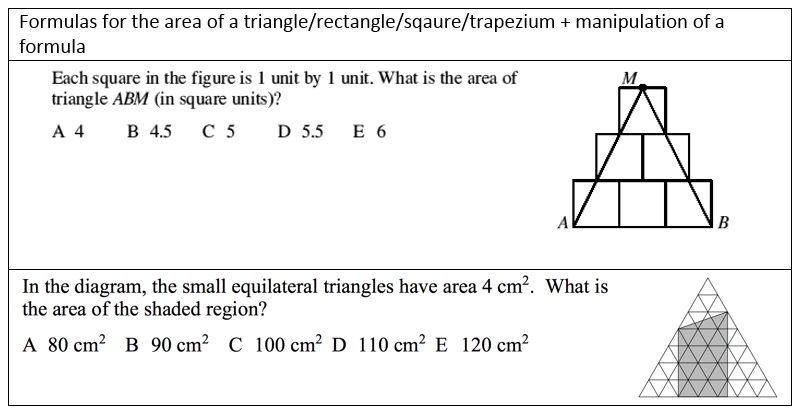
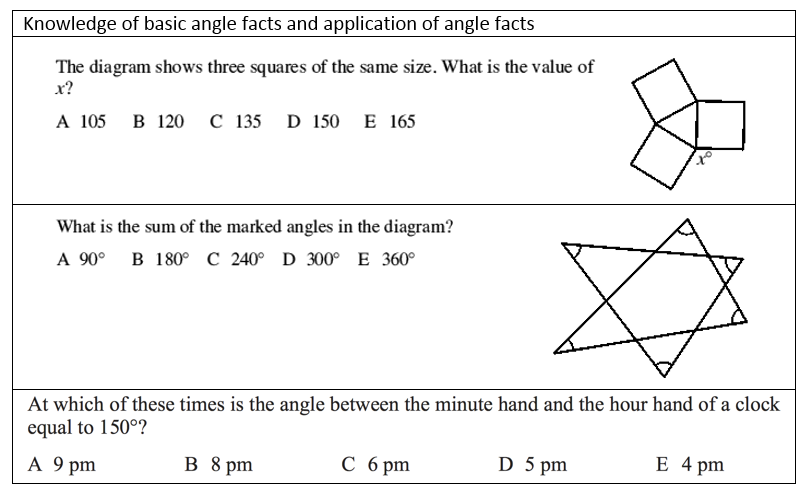

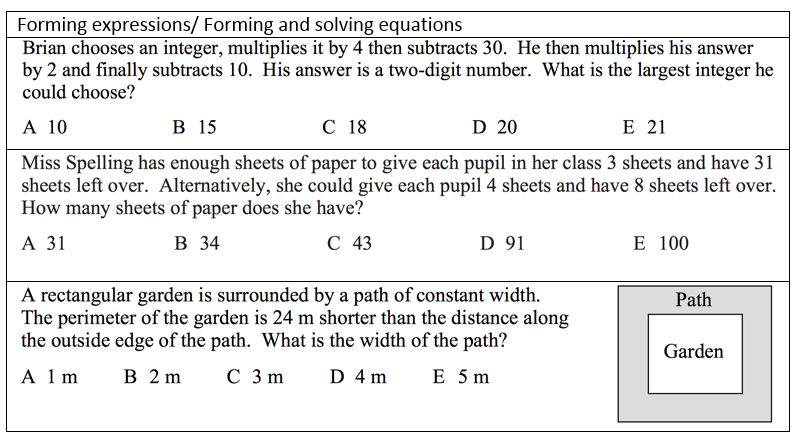

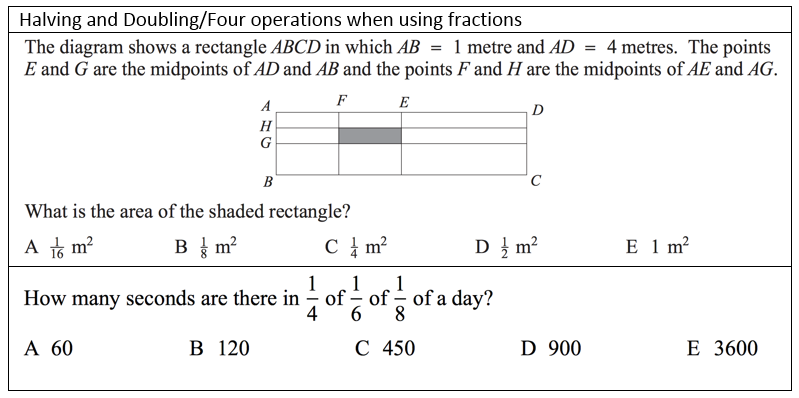






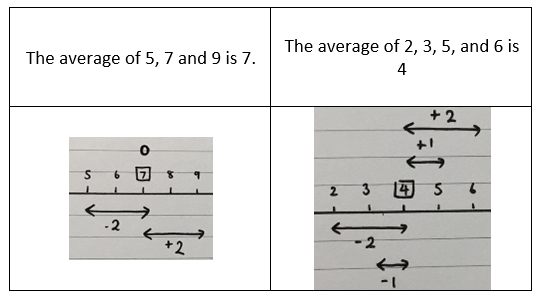
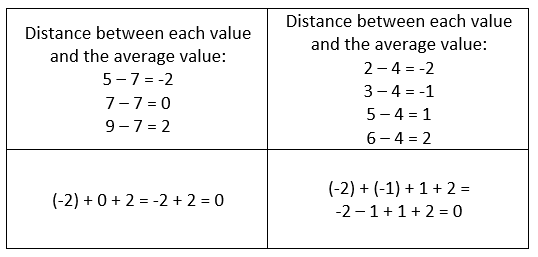


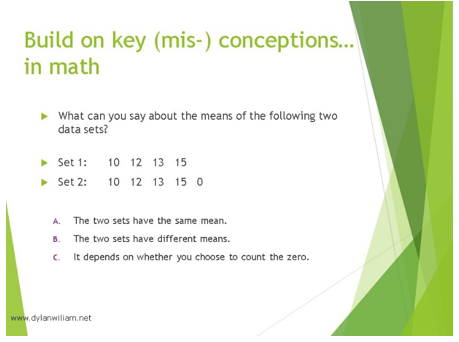







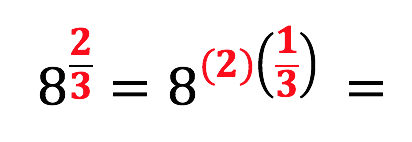


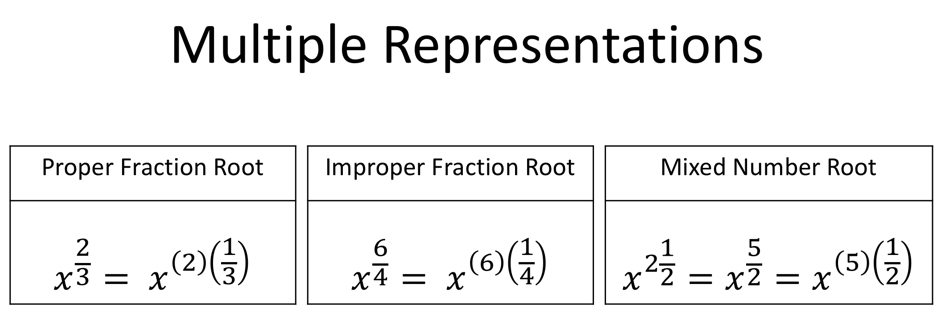
Recent Comments